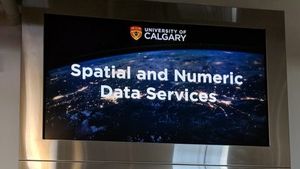I have been reading The power of pull by John Hagel III, John Seely Brown and Lang Davison. They provide a broad framework for thinking about current changes and how people and firms should position themselves to operate effectively. A major part of this is a shift from managing ‘knowledge stocks’ to being able to participate in ‘knowledge flows’.
John Hagel writes: “This pull approach seeks to develop scalable pull platforms that amplify our ability to draw out the people and resources when we need them and where we need them”.
I was struck by this passage …
We all talk loosely about information overload and assume that this is the real problem. In fact, we live in a world of increasing knowledge scarcity. The most valuable knowledge is in very short supply and is extremely hard to access. Information overload is a distraction. As we discussed in earlier chapters, in a world of accelerating change, the most valuable knowledge is highly distributed and may be embedded in the heads of people who are not well known and who are difficult to identify. […]
It’s not so much about finding which information is most valuable, as many of those who fret about information overload would have it. Improving return on attention is more about finding and connecting with people who have the knowledge you need, particularly the tacit knowledge about how to do new things. The danger is that we all get so busy assimilating explicit knowledge that we have no time to connect with people and build the relationships through which tacit knowledge flows. We get so busy reading about steampunk, or brewing, or building networks, that we don’t actually find and connect with and learn from the people who are doing it. It’s not so much information that we need as knowledge. And knowledge means people.
These people and the knowledge flows they generate can then become effective filters for information more broadly. By harnessing social media such as blogs, social-network platforms, and wikis, we can begin to rely on these mechanisms to expose ourselves to information that has been curated and passed on by these people. Since we deeply understand their contexts and passions, we can begin to determine when their recommendations are most reliable and increase our return on attention for both the tacit knowledge they offer and the information they recommend to us. Our personal social and professional networks will be far more effective in filtering relevant knowledge and information than any broader social-technology tools we might access.
The authors talk of three ‘primary levels’ of pull. First there is access, the ability to find people and resources when they are needed. The second is the ability to attract valuable and relevant people and resources to you. Social networking, conferences, location in relevant geographic spikes (Nashville for country music) are important here, as is the ability to be open to and develop relationships through serendipitous encounter. The third is the ability to achieve more by learning more effectively and translating that learning into improved performance. Interestingly, the authors discuss ‘creation spaces’ which support this third level. Examples include the social interaction on World of Warcraft and the SAP Developer Network which provide support for shared attention to problems.
The above passage, and the book itself, are suggestive in several ways. I thought I would mention a couple of things here.
The first is that I was interested in thinking about the three levels in relation to library expertise (if libraries want to be seen as experts, then their expertise must be seen).
- Access: is library expertise visible when people are searching for things? I have written before – here for example – about such expertise being visible on websites, and also, for example, of the nice feature on the University of Michigan website which returns appropriate library contacts in searches for resources.
- Attract: how should librarians position themselves so as to seem natural partners or collaborators.
- Achieve: as ‘creation spaces’ emerge how should librarians interact with them. One thing that comes to mind here is the role of emerging social networks for researchers, and library interaction and support. Guus van den Brekel spoke about this at the recent EMTACL10 conference [Slideshare].
The second is that I was struck by the extent to which success is seen by the authors to be bound up with network participation – networks of people and resources facilitated by digital networks. The future, they seem to suggest, favors – In Dave White’s phrase – the network residents.


